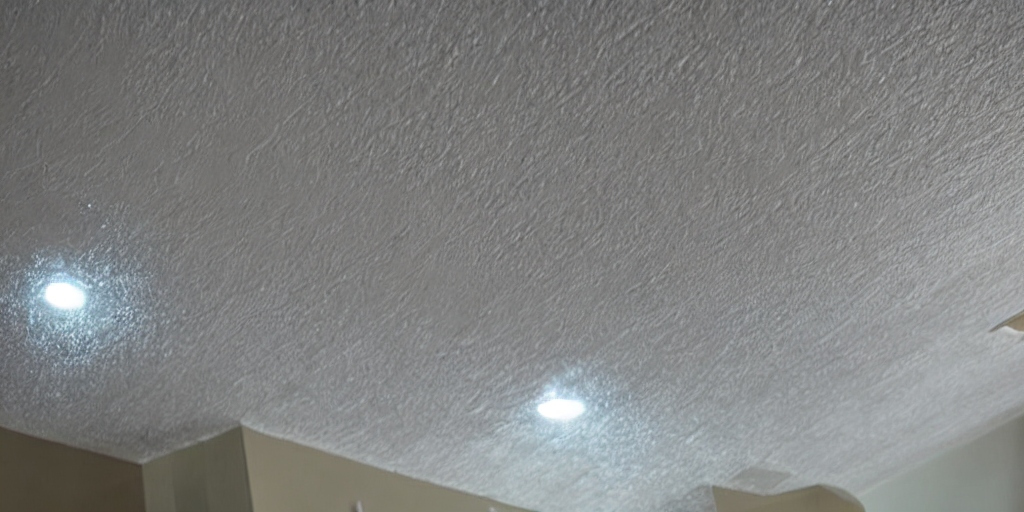When it comes to home maintenance, few things are as concerning as water damage. Not only can it wreak havoc on your property, but it can also be challenging to detect, particularly when it occurs on your ceiling. Knowing the signs of water damage on your ceiling is crucial for early detection and timely intervention. In this comprehensive guide, we’ll explore the various signs to watch out for and the steps to take when confronted with ceiling water damage.
Understanding Water Damage on Ceilings
Water damage on ceilings can manifest in several ways, each indicating a potential problem that needs immediate attention. Here are the key signs to be aware of:
- Peeling, Bubbling, or Flaking Paint: One of the most visible signs of water damage on a ceiling is the presence of peeling, bubbling, or flaking paint. When water seeps into the ceiling material, it can cause the paint to lose adhesion and peel away, revealing the underlying damage.
- Water Rings: If you notice light brown water rings on your ceiling, it’s a clear indication of past or ongoing water intrusion. These rings often form as water evaporates, leaving behind mineral deposits that stain the surface.
- Musty Smells: Water damage can create a conducive environment for mold and mildew growth, leading to musty odors in the affected area. If you detect an unpleasant smell emanating from your ceiling. It’s a sign that moisture is present and action is needed.
- Water Stains: Dark, yellow, or rust-colored stains on your ceiling are telltale signs of water damage. These stains can vary in size and intensity, depending on the extent of the underlying moisture problem.
- Sagging or Bowed Ceilings: Excessive water absorption can cause ceilings to sag or bow under the weight of accumulated moisture. If you notice any irregularities in your ceiling’s shape, it could indicate water damage.
- Mold Growth: Mold thrives in damp environments, making water-damaged ceilings prime breeding grounds. Keep an eye out for mold growth, especially in corners and areas with poor ventilation.
- Hairline Cracks or Patterns: Water damage can weaken ceiling materials, leading to the formation of hairline cracks or distinctive patterns. These cracks may appear gradually over time, signaling an underlying structural issue.
Also Read: The Battle Against Mold in Carpet from Water Damage: 6 Steps to Salvage Your Flooring
Steps to Address Ceiling Water Damage
Dealing with water damage on your ceiling requires prompt action to prevent further deterioration and potential health hazards. Here’s what you should do if you suspect water damage:
- Identify the Source of the Leak: Begin by locating the source of the water leak, which could originate from plumbing fixtures, roofing issues, or structural defects. Conduct a thorough inspection to pinpoint the exact source before proceeding with repairs.
- Stabilize the Leak: While waiting for professional assistance, take immediate steps to stabilize the leak and prevent further water ingress. This may involve shutting off water supply lines, covering damaged areas with tarps, or creating drainage holes to facilitate water removal.
- Repair the Leak: Depending on the nature of the leak, you may need to enlist the help of a qualified plumber, roofer, or contractor to address the underlying issue. Repairing the leak is essential to prevent recurrence and mitigate future water damage risks.
- Remove Damaged Materials: In cases of severe water damage, it may be necessary to remove compromised ceiling materials to facilitate drying and prevent mold growth. Exercise caution when handling wet materials and consider wearing protective gear.
- Dry Out the Area: Thoroughly dry out the affected area using industrial-grade fans, dehumidifiers, and proper ventilation. It’s crucial to eliminate excess moisture to discourage mold proliferation and ensure effective restoration.
- Repair and Restore the Ceiling: Once the area is completely dry, proceed with repairing and restoring the ceiling to its pre-damage condition. This may involve replacing damaged drywall, applying fresh paint, and addressing any structural concerns.

Who to Call for Ceiling Water Damage
If you’re unsure how to proceed or lack the necessary expertise, don’t hesitate to seek professional help for ceiling water damage restoration. Depending on the severity of the damage, you may need to contact:
- Plumber: For plumbing-related leaks or burst pipes.
- Roofer: For roof leaks or damaged roofing materials.
- General Contractor: For comprehensive repairs and restoration.
- Water Damage Restoration Company: For specialized mitigation and restoration services.
Also Read: Exploring the Dilemma of Water Damaged Ceilings: Causes, Detection, and Repair
Conclusion
Water damage on ceilings poses significant challenges for homeowners, but with proactive detection and timely intervention, the impact can be minimized. By familiarizing yourself with the signs of water damage and knowing how to respond effectively. You can safeguard your property against the detrimental effects of moisture infiltration. Remember, early detection and prompt action are key to mitigating the risks associated with ceiling water damage.
In conclusion, staying vigilant and addressing water damage promptly can save you time, money, and unnecessary stress in the long run. If you suspect water damage on your ceiling, don’t delay—take action today to protect your home and preserve its integrity for years to come.










